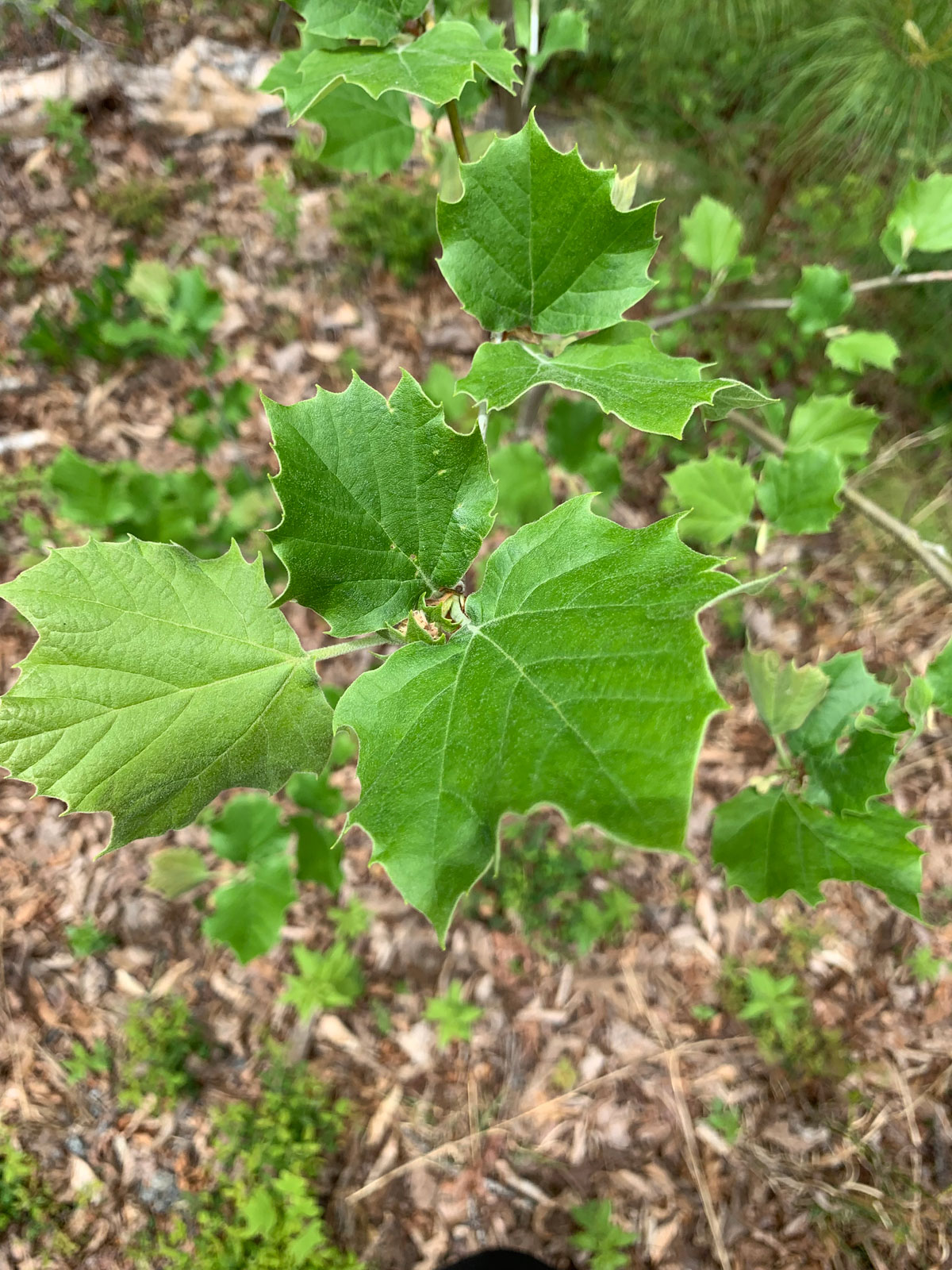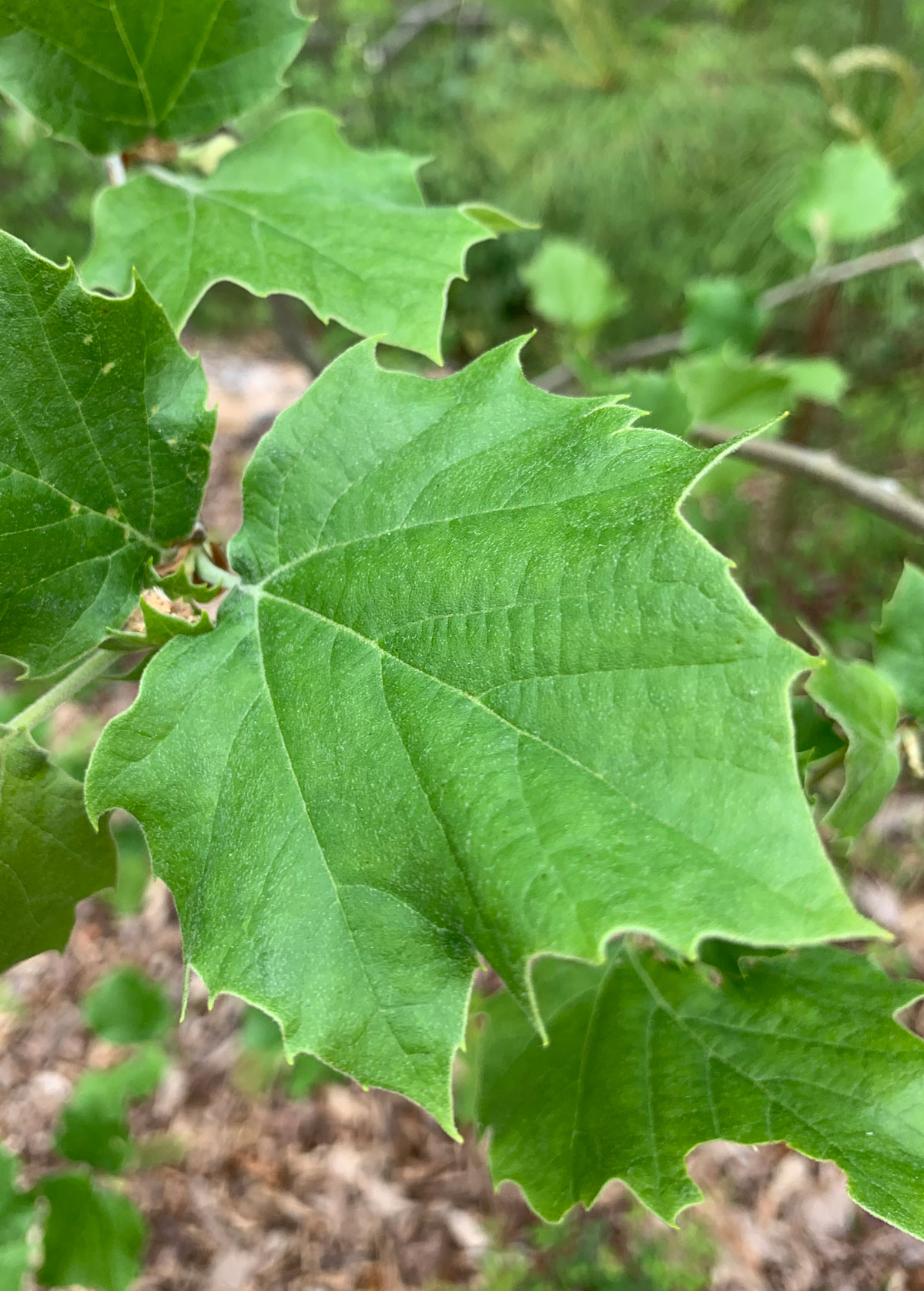Featured image credit: “Sycamore Tree” by poweron is marked with CC BY 2.0.
I think this might be one of my favorite trees in Virginia. I just love the striking bark, and the craggly shape of the branches. These trees can get HUGE. They are also often hollow…. so they can get incredibly tall and round, that, for example, “In 1744, a Shenandoah Valley settler named Joseph Hampton and two sons lived for most of the year in a hollow sycamore in what is now Clarke County, Virginia.” That’s according to the book “A History of the Valley of Virginia” written in 1833. I have not read this book, nor have I met the Joseph Hampton family to corroborate this story.
In addition to the singular trunk color, you may also recognize Sycamore trees in the winter by their “Christmas ornaments” – i.e. round slightly rough-looking seed pods that persist and hang off the branches throughout winter, as if the tree was decorated. Another tree that has similar looking seed pods is the Sweet gum tree, however that tree’s pods are smaller, and a little more rough and spiky.
Alternate Names: American Sycamore, American Planetree, Buttonwood, Water beech. Size: Up to 150' tall Family: Platanaceae (Plane-tree Family) Habitat: Prefers riparian and wetland areas (you'll usually spot them along creeks, streams, rivers). Identification: It's easy to identify this tree by it's bark, which is mottled and flakes off in large irregular masses. So it might look flakey, and also smooth in areas. It's gray, brown, and often (as you see in the main photo) the mature tree trunk is very white looking.












